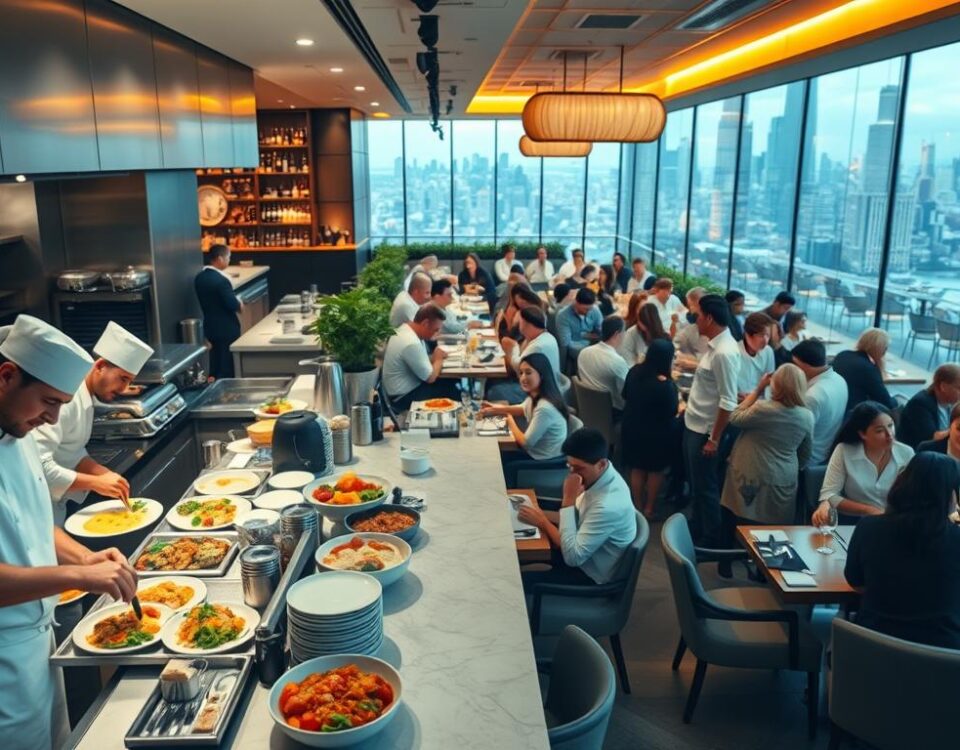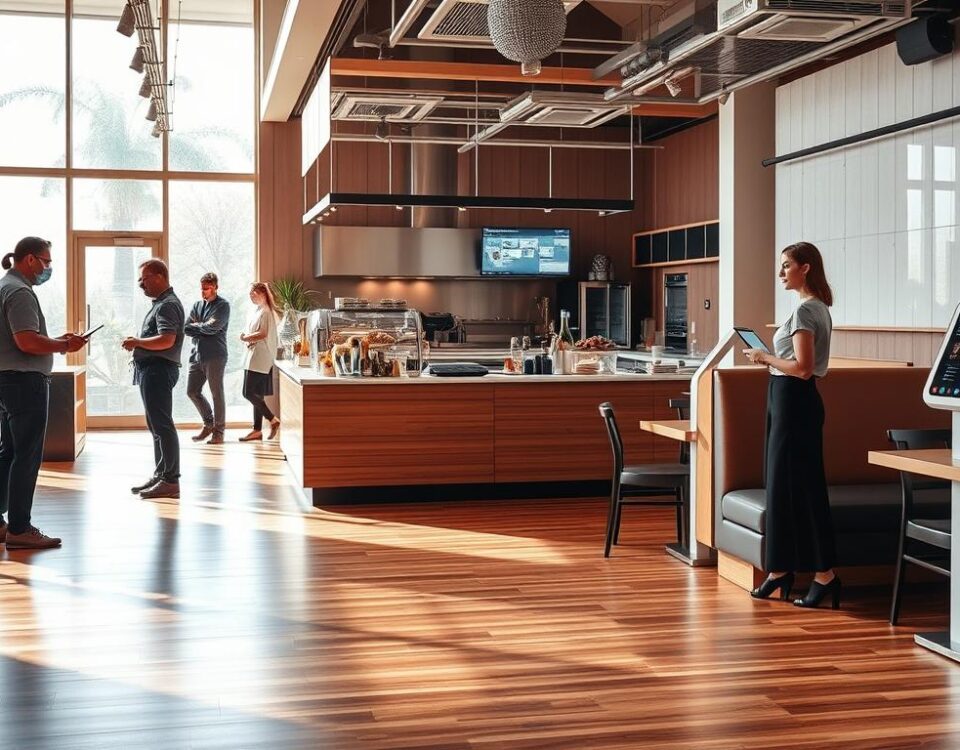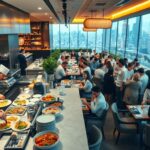
Restaurant Industry Trends 2025: 8 Shifts to Watch
October 11, 2025
How to Build a Restaurant Management Playbook That Boosts Profit
October 12, 2025As a restaurateur, you’ve likely experienced the dreaded slow season – a period when customers seem to vanish, and revenue dwindles. Earlier this year, Starbucks reported a 1% decline in revenue, with North American sales dropping by 3%. It’s a harsh reality that many in the restaurant industry face, regardless of the overall state of the economy.
These slow periods can be particularly challenging, but they’re not insurmountable. By understanding the patterns behind them, you can develop effective strategies to counter the downturn. With proper planning, you can transform slow seasons from periods of concern into opportunities for growth and innovation.
Key Takeaways
- Understanding the patterns behind slow seasons is crucial for developing effective countermeasures.
- Proper planning and targeted strategies can help restaurants thrive during slow periods.
- Transforming slow seasons into opportunities for growth and innovation is possible with the right approach.
- Analyzing the broader economy and its impact on the restaurant business is essential.
- Implementing specific tactics can help boost sales during traditionally slow times.
Understanding Restaurant Slow Seasons
Slow seasons are an inevitable reality for restaurants, influenced by various factors including location and target market. The restaurant industry is inherently subject to fluctuations due to consumer spending habits, external factors like weather and economic conditions, and seasonal events.
Factors Influencing Slow Periods
The timing and duration of slow seasons vary significantly across different restaurants. For instance, a beachside restaurant may experience slumps during the off-season, while an urban eatery might see a decline in business during certain weekdays.
Why Slow Seasons Are Inevitable
Consumer spending habits naturally fluctuate throughout the year, creating periods of lower restaurant traffic. Even successful restaurant chains experience predictable slow periods, showing this is an industry-wide phenomenon. External factors beyond a restaurant’s control, such as weather and economic conditions, further contribute to the inevitability of slow seasons.
| Factors | Impact on Restaurants | Example |
|---|---|---|
| Location | Influences foot traffic and customer demographics | A downtown restaurant may see less business on weekends. |
| Target Market | Affects dining habits and preferences | A family-friendly restaurant may be busier during school holidays. |
| Menu Offerings | Can attract or deter certain customer segments | A vegan restaurant may attract a specific clientele. |
Accepting the inevitability of slow seasons is the first step toward developing effective strategies to mitigate their impact. By understanding the factors that contribute to slow seasons, restaurants can better prepare and minimize their negative effects on the business’s bottom line.
Identifying the Two Major Slow Seasons for Restaurants
Restaurants typically face two major slow seasons throughout the year, impacting their overall sales and customer traffic. These periods are critical for restaurant owners to understand, as they can significantly affect the business’s financial health.
Winter Months: Weather’s Impact on Dining Out
The winter months often see a decline in restaurant traffic due to harsh weather conditions. Inclement weather can deter customers from dining out, leading to reduced sales. To mitigate this, restaurants can consider offering promotions or discounts to attract customers during this period.

Post-Holiday Period: January Through March
The post-holiday period, spanning January through March, is another slow season for restaurants. Consumers tend to reduce their spending on dining out as part of their New Year’s resolutions to cut expenses. Data from surveys conducted by Ipsos and Statista reveal that a significant percentage of consumers resolve to dine out less, directly impacting restaurant sales during this quarter.
| Period | Impact on Restaurants | Potential Strategies |
|---|---|---|
| Winter Months | Reduced customer traffic due to weather | Promotions, discounts |
| Post-Holiday Period | Consumers dining out less due to New Year’s resolutions | Targeted marketing, loyalty programs |
Why Preparing for Slow Seasons Is Critical for Restaurant Success
A well-prepared restaurant can turn slow seasons into opportunities for growth and innovation. By doing so, I can ensure that my restaurant remains competitive and continues to attract customers even during the off-peak periods.
Financial Stability Throughout the Year
Preparing for slow seasons allows me to maintain financial stability throughout the year. By having a strategy in place, I can manage my finances more effectively, ensuring that my restaurant remains profitable even during periods of low customer traffic.
The table below illustrates a simple financial planning strategy that can be implemented during slow seasons:
| Month | Projected Revenue | Projected Expenses |
|---|---|---|
| January | $50,000 | $40,000 |
| February | $45,000 | $38,000 |
| March | $48,000 | $42,000 |
Opportunity for Growth and Innovation
Slow seasons provide a valuable opportunity for growth and innovation. During this time, I can focus on staff training, menu development, and operational improvements that are not possible during busy periods. By leveraging these opportunities, I can enhance the overall customer experience and stay ahead of the competition.
Some strategies I can implement include testing new menu items, gathering customer feedback, and refining my marketing strategy. By doing so, I can ensure that my restaurant is always improving and adapting to changing customer preferences.
Effective Strategies to Boost Restaurant Sales During Slow Seasons
Effective strategies are crucial for restaurants to maintain sales momentum during slow seasons. By adopting a proactive approach, restaurants can minimize the impact of slow periods and stay on track financially.
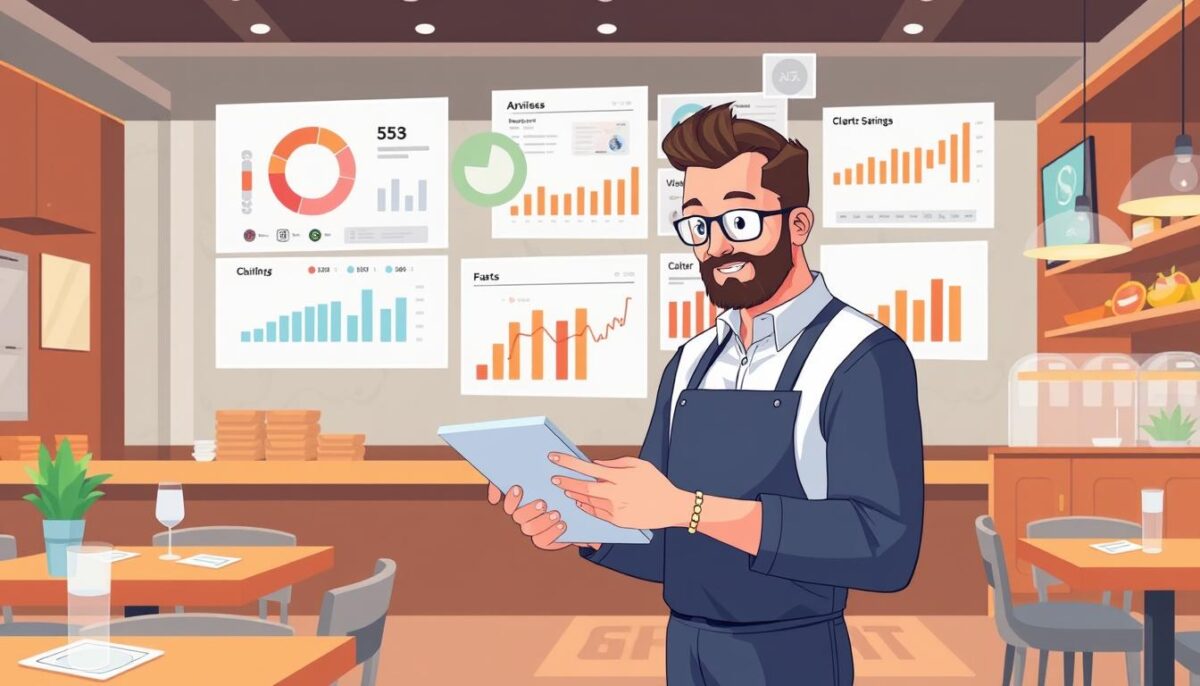
Setting Clear Goals and Analyzing Data
To boost sales, it’s essential to set clear goals and analyze data to understand customer behavior and preferences. By leveraging data analytics, restaurants can identify trends and opportunities to drive sales. This involves examining sales reports, customer feedback, and market trends to inform strategic decisions.
Inventory Management to Reduce Waste
Effective inventory management is critical during slow seasons to prevent waste and control costs. Strategies include reducing par levels, adjusting order frequencies, and implementing just-in-time ordering. By optimizing inventory, restaurants can minimize food waste, save money, and improve kitchen productivity.
To achieve this, restaurants should create a check routine, evaluate stock before closing, invest in a POS system with real-time inventory tracking, and focus on proper food storage techniques. By doing so, restaurants can reduce waste, maintain menu variety, and ensure that ingredients are utilized efficiently.
Leveraging Technology to Drive Sales in Slow Periods
In today’s digital age, restaurants can significantly boost sales during slow periods by embracing technology. By leveraging the right tools, restaurants can streamline operations, enhance customer experience, and ultimately drive sales.
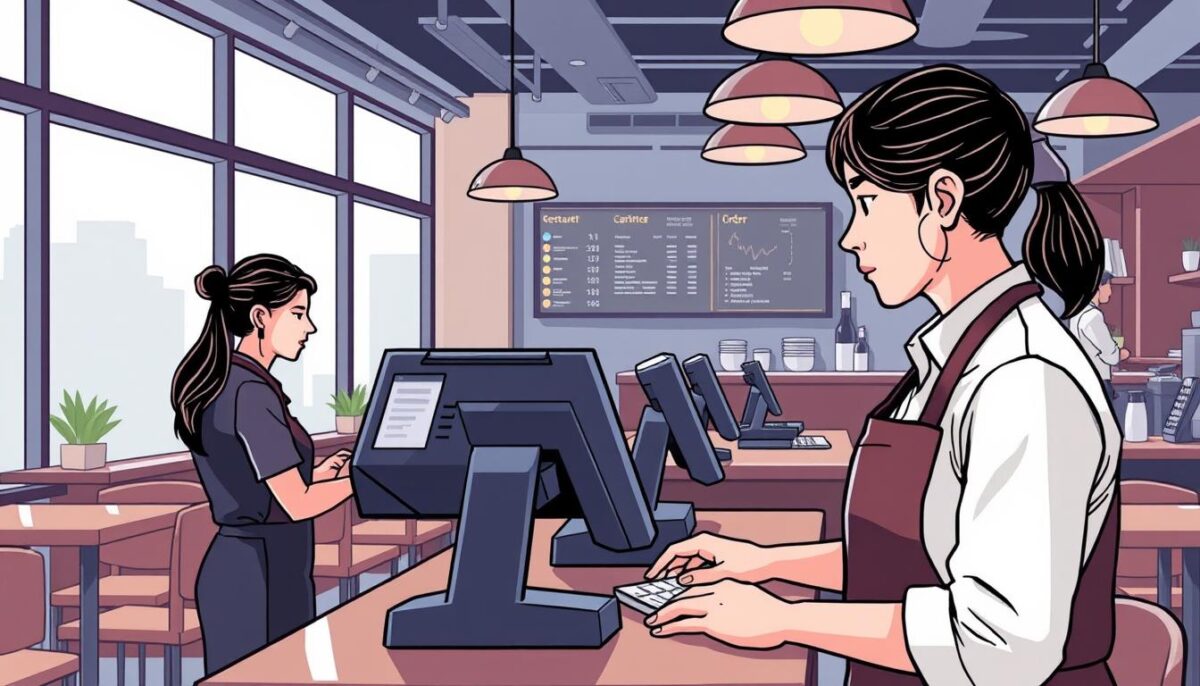
POS Systems and Data Analytics Tools
Implementing advanced POS systems and data analytics tools can help restaurants better understand customer behavior and preferences. These systems provide valuable insights into sales trends, allowing restaurants to make informed decisions about menu offerings, pricing, and promotions. By analyzing data, restaurants can identify areas of improvement and optimize their operations to attract more customers.
Online Ordering and Reservation Platforms
Online ordering and reservation platforms are crucial for maintaining sales volume during slow periods. By offering online ordering on their website, restaurants can highlight menu items visually and make it easier for customers to place orders. Partnering with delivery services like GrubHub, Slice, and Uber Eats can also expand a restaurant’s reach. Moreover, reservation systems help manage staffing and resources more effectively during unpredictable slow season traffic.
By embracing technology, restaurants can not only survive slow periods but also create new opportunities for growth and customer engagement. Effective use of online ordering, delivery services, and data analytics can lead to increased sales and a stronger customer base.
Menu Engineering and Pricing Strategies
Effective menu engineering and pricing strategies can significantly enhance restaurant sales during slow seasons. By adjusting the menu and prices, restaurants can attract more customers and increase revenue.
Creating Seasonal Specials and Limited-Time Offers
Creating seasonal specials and limited-time offers can drive customer interest and boost sales. Restaurants can introduce new dishes or promotions that are only available for a limited period, creating a sense of urgency among customers.
Strategic Pricing and Value Promotions
Strategic pricing involves adjusting prices based on sales data and customer behavior. Restaurants can offer value promotions like prix fixe menus or happy hour extensions to attract price-sensitive customers.
| Pricing Strategy | Description | Benefit |
|---|---|---|
| Prix Fixe Menu | A fixed-price menu offering multiple courses | Attracts customers with a perceived value |
| Happy Hour Extension | Extending happy hour beyond traditional hours | Increases sales during slow periods |
| Bundling Menu Items | Offering multiple items at a discounted price | Increases average check size |
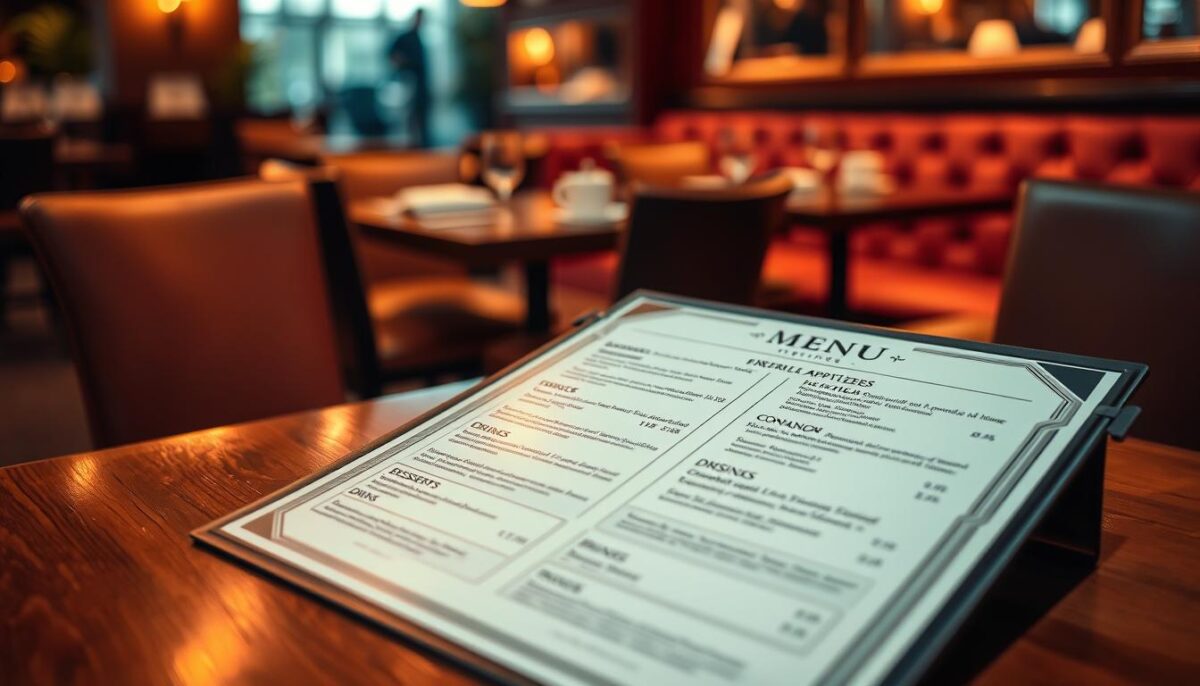
By implementing these strategies, restaurants can effectively manage slow seasons and attract more customers.
Building Customer Loyalty During Slow Seasons
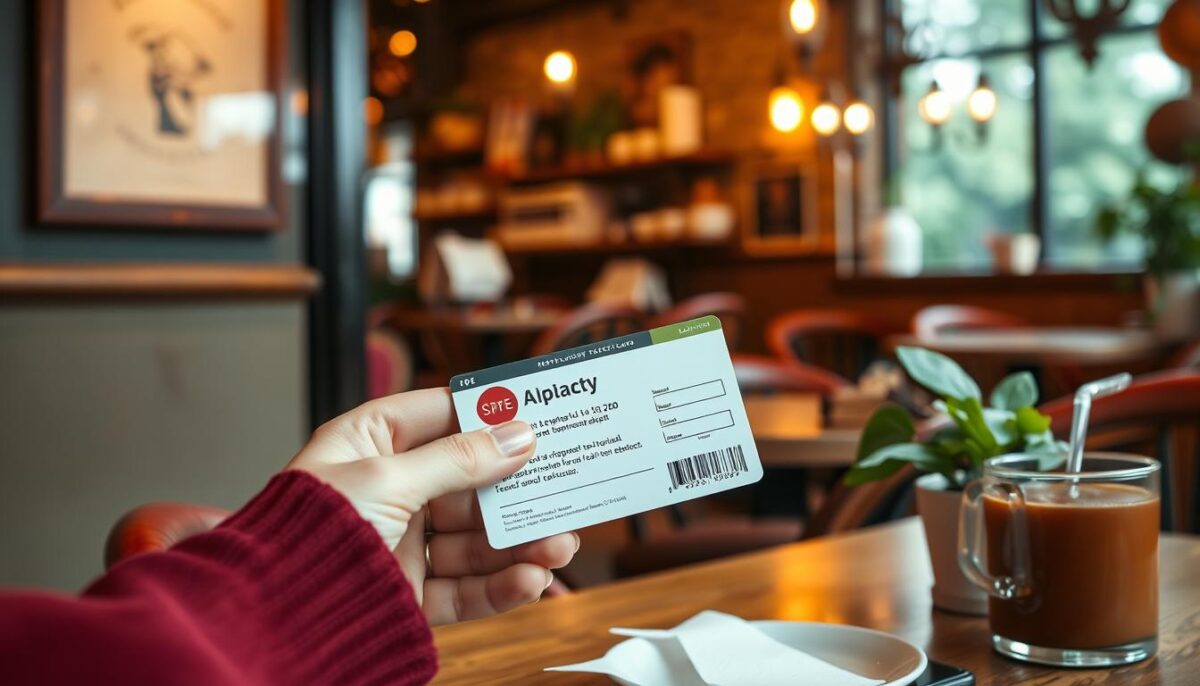
During slow seasons, restaurants can benefit significantly from strategies that foster customer loyalty. One effective approach is to implement a well-designed loyalty program that rewards customers for their repeat business.
Implementing Effective Loyalty Programs
A successful loyalty program should be easy to understand and offer rewards that are appealing to your customers. For instance, offering a free meal or beverage after a certain number of visits can encourage customers to return. It’s also crucial to promote your loyalty program through various channels, including social media and email marketing campaigns.
Email and SMS Marketing Campaigns
Email and SMS marketing campaigns can be powerful tools for bringing in customers during slow periods. By segmenting your customer database, you can create personalized offers that resonate with different customer groups. Timing and frequency are key; your messages should be well-timed and not overly frequent to avoid annoying your customers. Crafting compelling offers that motivate immediate action without excessive discounting is also vital. Measuring the effectiveness of these campaigns through open rates, click-through rates, and conversion metrics will help you refine your strategy.
By leveraging loyalty programs and targeted email and SMS marketing, restaurants can strengthen their relationship with customers and drive sales during slow seasons.
Expanding Your Reach Through Marketing and Events
To boost restaurant sales during slow seasons, it’s essential to expand your reach through effective marketing and events. By leveraging various strategies, you can attract new customers and retain existing ones, ultimately driving sales and revenue.
Social Media Strategies for Restaurants
Social media is a powerful tool for restaurants to engage with customers and promote their offerings. By creating engaging content, utilizing relevant hashtags, and running targeted ads, you can increase your restaurant’s online presence and attract new customers. For instance, sharing behind-the-scenes moments or limited-time offers can encourage followers to visit your restaurant.
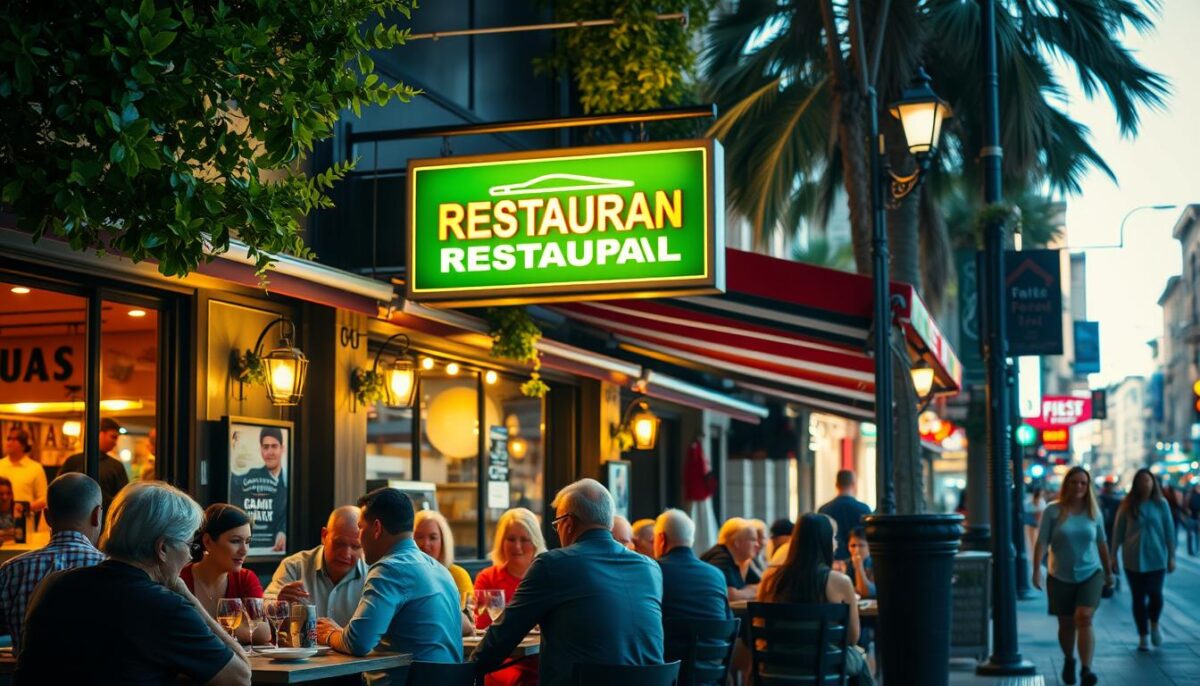
Hosting Special Events and Theme Nights
Hosting special events and theme nights is an effective way to create buzz around your restaurant. Events like live music nights, wine tastings, or holiday-themed dinners can attract new customers and encourage repeat business. By promoting these events through social media and email marketing, you can maximize their impact.
Collaborating with Local Businesses and Influencers
Collaborating with local businesses and influencers can help expand your restaurant’s reach. Partnering with neighboring businesses to create cross-promotional opportunities or working with local influencers to promote your restaurant to their followers can drive traffic and increase visibility. For example, offering discounts to customers who show a receipt from a local store or collaborating with a nearby brewery to host a beer tasting event can be mutually beneficial.
Conclusion: Turning Slow Seasons into Opportunities
By adopting the right strategies, restaurants can transform slow seasons from challenges into periods of growth and innovation. Throughout this article, we’ve explored ten proven strategies to boost restaurant sales during off-peak periods. These include leveraging technology, menu engineering, building customer loyalty, and expanding your reach through marketing and events.
Successful restaurants don’t just survive slow seasons—they use them strategically to strengthen their business for the long term. The predictability of slow seasons gives restaurants an advantage in planning and implementing effective counter-strategies. By combining multiple approaches, you can create a comprehensive strategy that’s greater than the sum of its parts.
To maximize sales and maintain a loyal customer base throughout the year, it’s crucial to adapt these strategies to fit your restaurant’s unique identity and target audience. Building customer loyalty during slow periods pays dividends throughout the entire year. By measuring success and continuously refining your strategies based on results from each slow season, you can ensure long-term business success.
Embracing slow seasons as opportunities for innovation, staff development, and business improvement will position your restaurant for sustained growth and profitability.
FAQ
What are the most effective ways to attract new customers during slow periods?
I find that leveraging social media platforms, offering limited-time promotions, and collaborating with local businesses can help draw in new diners. For example, creating engaging content on Instagram and partnering with influencers can increase my restaurant’s visibility.
How can I optimize my menu to drive revenue during slow seasons?
To optimize my menu, I focus on creating seasonal specials, adjusting prices strategically, and promoting value deals. By analyzing customer data and sales trends, I can identify opportunities to upsell or cross-sell menu items, ultimately increasing average order value.
What role does email marketing play in maintaining customer loyalty during slow periods?
I believe email marketing is crucial in keeping my customers engaged during slow seasons. By sending targeted campaigns and exclusive offers, I can encourage repeat business and foster a loyal customer base. For instance, offering loyalty rewards or early access to new menu items can make my customers feel valued.
How can I use data analytics to inform my restaurant’s marketing strategy?
By leveraging data analytics tools, I can gain insights into customer behavior, sales patterns, and market trends. This information helps me make informed decisions about menu engineering, pricing, and promotions, ultimately driving revenue and customer satisfaction.
What are some creative ways to host special events and theme nights?
I like to get creative with event concepts, such as hosting wine pairings, live music nights, or holiday-themed parties. By partnering with local businesses and influencers, I can attract new customers and create a buzz around my restaurant.
How can I measure the success of my loyalty program?
To measure the success of my loyalty program, I track key metrics such as customer retention rates, redemption rates, and overall revenue generated by loyalty program members. By analyzing these metrics, I can refine my loyalty program to better meet customer needs and drive business results.


